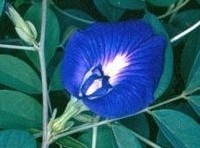Sex Organs of Plants
Sex organs of plants are found inside flowers. A male reproductive organ is called as Androecium and a female sex organ is called as Gynoecium.
Androecium has following parts-
(i) Filament
(ii) Connective, and
(iii) Pollen Sac
Filament is a thread like structure which bears pollen grain through connective and the base of the flower. Connective is the part which connects the filament with the pollen sac. The Pollen sac is a capsule like structure which contains pollen grains. Pollen grains contain male gametes.
The Gynoecium has following parts –
(i) Ovary
(ii) Style, and
(iii)Stigma

The ovary is a sac like structure which contains ovule. It is attached with the base of the flower. The ovule contains female gametes. Style is a tubular structure which starts from the ovary and ends up into a funnel like platform called as stigma.
Landing of pollen grains on stigma through different agencies like air, water, humans, bats, birds, water, and elephants etc., is called as pollination.
When pollen grains mature inside pollen sacs the pollen sacs burst due to pressure from inside and pollen grains become free to be carried away through different agencies. It is often seen that though a bisexual flower has both the sex organs inside; both the organs do not mature together. Thus pollen grains of one flower often fail to pollinate the same. Instead, pollen grains of one flower pollinate the other flower. This is called as cross pollination. If both the male and female sex organs mature together, this condition is called as Homogynal. Sunflower and four o’clock plant (Mirabilis jalapa) etc. are glowers with sex organs that mature together. Pollination of a flower by pollen grains of the same flower is called as Self Pollination.
In some bisexual flowers male and female sex organs do not mature at one time. This condition is called as Dichogamy. If androecium matures first the condition is called as Protandry whereas when gynoecium matures first the condition is called as Protogynae.Due to these conditions these flowers fail to self-pollinate. Beyond these conditions there are flowers that are always self-pollinatedin spite of Dichogamy. Morphology (make up) of the flower and position of the sex organs always favours this condition. These flowers have such morphology that pollens of other flowers can never pollinate these flowers. This condition is called as Cleistogamy.
Male and female sex organs of Oxalis and Prime rose have vast differences in their length and position. This condition is called as Heterostyly. In the flowers of Madar (Calotropis) pollen grains are contained in typical structures called as Pollinia. Mainly insect pollination takes place in such flowers. This condition is called as Herkogamy.
Fertilization:
When a pollen grain lands on stigma it absorbs the nutritious slime found there and starts germination. During germination a pollen tube emerges and moves toward the ovary. In the meantime the nucleus of the pollen grain migrates in the pollen tube and divides into two Male Gametes. When male gametes reach to the ovary they fuse with the two female gametes one with the egg cell and the other with the polar nucleus. Thus the process of fertilization gets completed here.

Fusion of male and female games is called as fertilization. If two male gametes fuse with two female gametes the process is called as Double Fertilization.
After fertilization ovary develops and gets metamorphosed into fruit. Seeds contain embryo. The embryo has the capacity of developing root and stem. Seeds contain food for the embryo. A seed can survive into adverse conditions but germinates in favourable conditions to give birth to a new plant.
Image Credit NCERT




